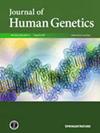变异亚分级、疾病基因关联和严格的临床标准提高了对遗传性心肌病和节律障碍中不确定意义的变异的解释。
IF 2.5
3区 生物学
Q2 GENETICS & HEREDITY
引用次数: 0
摘要
除了ClinGen努力标准化ACMG/AMP标准和欧洲旨在监测质量标准的倡议外,遗传性心肌病和心律失常(HCHRDs)的分子诊断仍然受到当地策略的强烈影响,这些策略是为了克服基因检测所要求的变量。这是一项对363个不同HCHRDs家系的临床和分子发现的单中心研究。ACMG/AMP标准根据ClinGen的材料和内部规格进行调整。表型根据已知的疾病-基因关联和同一个体中多个变异的并发进行审查。在有亲属的情况下进行了研究,所选变异的重要性在报告前得到了RNA研究的支持。在80个(22.0%)家系中发现了一个或多个(可能的)致病变异,而96个(26.4%)家系仅显示一个或多个不确定意义(VUS)的变异。所确定的132个VUS根据贝叶斯评分分为三类,呈现所选标准的可区分模式。VUS_high显示了关键分子标准的轮廓,并且根据指定标准的组合类似于有害变异,而VUS_low类别显示了标准和不支持的疾病基因关联的冲突组合的高机会。应用适用的临床标准(pvs1 - strength, PP1和PP4)将VUS_high和少数VUS_mid重新分类为可能致病。这项工作支持以下综合需求:(i)引入VUS亚分级,(ii)考虑已知的疾病-基因关联,(iii)严格应用临床标准,以及(iv)纳入RNA数据以提高HCHRDs基因检测的临床意义。本文章由计算机程序翻译,如有差异,请以英文原文为准。

Variant sub-tiering, disease-gene associations and strictness of clinical criteria improves the interpretation of variants of uncertain significance in hereditary cardiomyopathies and rhythm disorders
Besides the ClinGen’s efforts to standardize the ACMG/AMP criteria and European initiatives aimed at monitoring quality standards, molecular diagnostics of hereditary cardiomyopathies and heart rhythm disorders (HCHRDs) remains strongly influenced by the local strategies developed to overcome the variables in which genetic testing is requested. This is a monocentric study on the clinical and molecular findings of 363 pedigrees with various HCHRDs. ACMG/AMP criteria were adapted according to the ClinGen’s material and internal specifications. Phenotypes were reviewed according to known disease-gene associations and the concurrence of multiple variants in the same individual. Relatives were studied when available and the significance of selected variants was supported by RNA- studies before reporting. One or more (likely) pathogenic variants were found in 80 pedigrees (22.0%), while 96 (26.4%) displayed one or more variants of uncertain significance (VUS) only. The 132 identified VUS were sub-tiered according to the Bayesian score in three categories presenting distinguishable patterns of selected criteria. VUS_high showed profiles of key molecular criteria and resembled deleterious variants according to the combinations of assigned criteria, while the VUS_low category displayed a high chance of conflicting combinations of criteria and unsupported disease-gene associations. Reclassification to likely pathogenic by the application of applicable clinical criteria (PVS1_Strength, PP1 and PP4) was accessible to VUS_high and a few VUS_mid only. This work supports the combined need to (i) introduce VUS sub-tiering, (ii) consider known disease-gene associations, (iii) stringently apply clinical criteria and (iv) incorporate RNA data to improve the clinical significance of genetic testing in HCHRDs.
求助全文
通过发布文献求助,成功后即可免费获取论文全文。
去求助
来源期刊

Journal of Human Genetics
生物-遗传学
CiteScore
7.20
自引率
0.00%
发文量
101
审稿时长
4-8 weeks
期刊介绍:
The Journal of Human Genetics is an international journal publishing articles on human genetics, including medical genetics and human genome analysis. It covers all aspects of human genetics, including molecular genetics, clinical genetics, behavioral genetics, immunogenetics, pharmacogenomics, population genetics, functional genomics, epigenetics, genetic counseling and gene therapy.
Articles on the following areas are especially welcome: genetic factors of monogenic and complex disorders, genome-wide association studies, genetic epidemiology, cancer genetics, personal genomics, genotype-phenotype relationships and genome diversity.
 求助内容:
求助内容: 应助结果提醒方式:
应助结果提醒方式:


